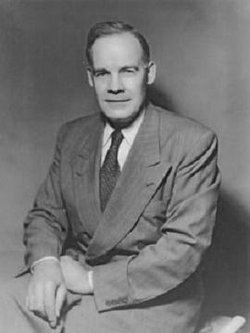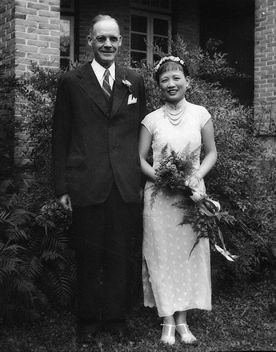Name John Buck | ||
 | ||
Spouse Pearl S. Buck (m. 1917–1935) Books Land Utilization in China: Statistics, Chinese farm economy, Three Essays on Chinese Farm Economy People also search for Pearl S. Buck, Absalom Sydenstricker, Janice Walsh, Carol Buck, Richard Walsh, Caroline Stulting | ||
Born 27 November 1890 (age 84) Died 27 September 1975 (aged 84), Poughkeepsie, New York, United States | ||
John Lossing Buck (1890–1975) was an American agricultural economist specializing in the rural economy of China. He first went to China in 1915 as an agricultural missionary for the American Presbyterian Mission and was based in China until 1944. His wife, whom he later divorced, was Nobel Prize-winning author Pearl S. Buck (1892–1973).
Contents

Youth and education

Buck was born in Dutchess County, New York. He graduated from Cornell University in 1914, and returned for an M.S. in 1925, and a PhD in 1933.
In China
In 1917, Buck married Pearl Sydenstricker, who subsequently became famous under her married name Pearl S. Buck. In 1920 they had a child, Carol Grace, and in 1925 adopted Janice. In 1918, Lossing, as he was known to his friends, and Pearl went to live in Nanhsuchou, where Lossing began his research into the Chinese farm economy using sociological tools based on statistical surveys conducted in person. Pearl, who had grown up in China, accompanied him on his initial trips through the countryside to interpret and translate. In 1920, Nanking University, a Christian institution, invited Lossing to create and head a Department of Agricultural Economics. Over the next twelve years he organized his students to conduct a survey of 16,786 farms and 38,256 farm families, which he analyzed in Chinese Farm Economy (University of Chicago Press, 1930), the first footnote of which cited his wife's novel The Good Earth. Buck continued the surveys, producing a three volume study, Land Utilization in China (University of Chicago Press, 1937).
Later life and career
In 1932,The Good Earth won a Pulitzer Prize, but in 1935 the couple divorced. In 1941 he married Lomay Chang (1908-2012) in Chengdu, China. They had two children, Rosalind, born in China, and Paul, born in the United States.
In the following years Buck was U.S. Treasury Representative in China, Chief of the Land and Water Use Branch of FAO (United Nations) and Director for agricultural economics at the Council on Economic and Cultural Affairs. After retiring in 1957 he continued writing, giving lectures and served as a specialist for the U.S. State Department’s Bureau of Educational and Cultural Affairs. Buck continued to be published prolifically, including Food and Agriculture in Communist China by John Lossing Buck, Owen L. Dawson, and Yuan-Li Wu. (New York: Praeger, London: Pall Mall, Prepared for the Hoover Institution on War. Revolution and Peace, 1966).
Assessment
China economists disagree on the value of Buck's surveys of the 1920s and '30s. Some, especially those writing from a Marxist perspective, felt that Buck was too optimistic in finding that technological backwardness, not inequality of land distribution, was the main problem. They charged that Buck's students reported on their own families and villages, which naturally were more prosperous than average. Others, while conceding that Buck did not perform class analysis, questioned whether it was appropriate to read outside categories into the surveys. In any case, there is general agreement that Buck's surveys are still the most extensive ones available.
